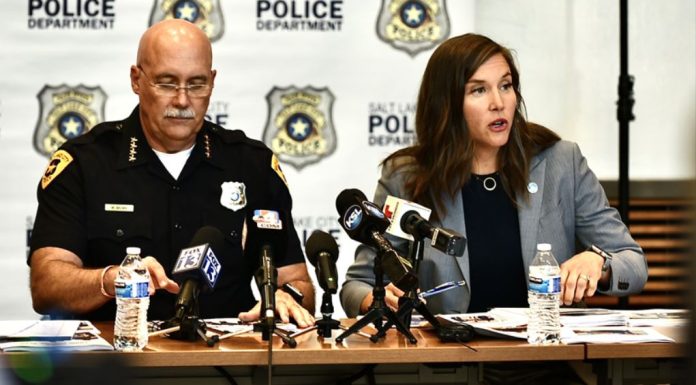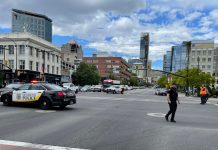
SALT LAKE CITY, Utah, Oct. 10, 2022 (Gephardt Daily) — Salt Lake City Mayor Erin Mendenhall and SLC Police Chief Mike Brown on Monday announced phase three of the Crime Control plan for the city.
Phase three, overall, is called “hot spot policing,” which Brown said will focus officers and resources on the area where crime occurs the most frequently.
The SLCPD released the following basic summary of its planned strategies:
Hot Spots Policing
Short-term strategy – Hot spots policing can have a significant impact on reducing violence. By increasing the visibility of uniformed officers at and around addresses that statistically have higher violent crime, the SLCPD can prioritize street-level deterrence. The SLCPD has already seen early improvements with this approach.
Problem-Oriented, Place-Based Policing
- Mid-term strategy – Under this model, SLCPD will lead and coordinate. Addressing crime needs a holistic response from local government. SLCPD will work to identify and address the underlying conditions that contribute to violent crime at crime-prone areas. The department will establish a working group of key city stakeholders to implement solutions, such as environmental design changes.
Focused Deterrence
- Long-term strategy – The goal of focused deterrence is to change the behavior of high-risk offenders through a combination of deterrence, arrest, community involvement and the provision of alternatives to violence. Our focused deterrence is a resource-intensive process that will involve multiple law enforcement and community partners, including the United States Attorney’s Office and our partnership with the Project Safe Neighborhoods.
The phase one was introduced in January 2021, and phase two was initiated in November of that year. To see a copy of the the updated Crime Control Report, click here.
Brown said phase three will focus on “strengthening communities, promoting safety and expanding opportunities that really is looking at things outside the box; looking at different ways that we can police our communities, and being involved in our communities.”
Crime updates
Brown and Mendenhall both said violent crime is down 4.5% since between Jan. 1 and Oct. 2, adding that property crime is down 10% and total crime is down 9%.
Mendenhall said in the same time period, calls for service increased from 96,000 last year to 104,000 this year.
Brown said his department has broadened its scope, adding social workers and other specialists, but also faces increased demand from the public.
“We’re looking for strategizing better ways that we can serve this community because the calls for service when when somebody calls the police, they expect somebody to come and we want to get there as soon as possible. Better yet, we’d love to prevent crime. But we want to get to these calls as fast as we can, whatever they may be.”
Brown said the SPCPD currently has 41 vacancies, and officers are required to work overtime, adding a fifth 10-hour shift some weeks. Brown said that over the past three to four months, officers have been asked to sign up for an additional seven shifts.
A $5,000 lateral signing bonus has resulted in only four hires, Mendenhall said, possibly due to other cities offering larger amounts.
Brown said the department is adding another 12 SWAT positions and 10 positions for officers with violent crime training.
Mendenhall said the city council will make decisions on possible funding for overtime shifts or pay increases that might boost retention.






